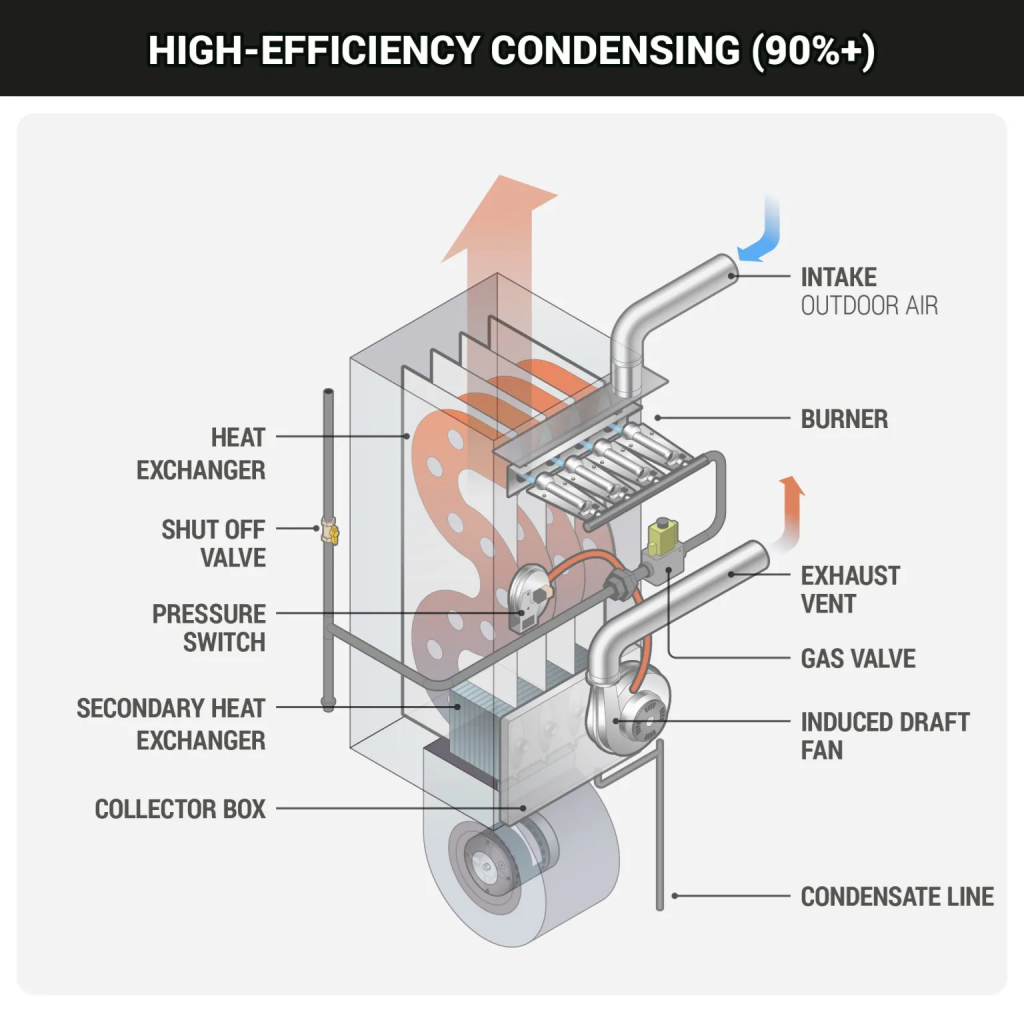Get Tech Tips
Subscribe to free tech tips.
Two Ways to Prevent Freezing in 90%+ Furnace Condensate Lines
This tech tip came from an email sent by Adam Blunkall, a Tennessee-based HVAC technician. He shared some tips to help prevent the issue of freezing in 90%+ furnaces in his market, and we appreciate his insight. Thanks, Adam!
If we’re draining our 90%+ furnaces (or any condensing heating system) outside the structure in a similar fashion as we would a standard AC condensate drain, we may run into an issue with freezing inside the condensate line. This issue is especially common during extended periods of below-freezing temperatures. When that condensate line freezes up, the resulting buildup of pressure inside the condensate line shuts our furnace down.

During a service call, the best thing we can do for the customer is to thaw that line, allow the condensate to drain, and get the furnace up and running to provide heat. However, that line will freeze again, and we will continue to have the same problem: shutting the furnace down. There is no simple, easy, or cheap fix to prevent this from recurring over and over.
Long-Term Solutions
Customers get frustrated when they have a recurring problem that the service technician can’t fix with the tools they have. The best solution would be to run the drain to an interior drain where it won't experience freezing temperatures. However, depending on home construction, this is not always viable or could be cost-prohibitive. If draining into an interior drain, be sure to follow code according to the authority having jurisdiction.
To determine a suitable long-term repair for the freezing condensate lines, we must first address why the condensate line continues to freeze. There are two issues that contribute to the freezing of the condensate line: the slope of our condensate line as it exits the structure and the interior volume of our ¾” inch condensate line.
Condensate Line Slope
Typically, the condensate line will exit the structure at a near-horizontal level, maintaining that ⅛” to ¼” of fall to the outside. This configuration provides a very slow-moving condensate as it transitions from inside the structure to outside the structure inside the line. That slow movement gives the water more time to freeze inside the condensate line.
The recommendation for this would be to exit the structure at a 45° downward angle, which will dramatically speed up the velocity at which the condensate is moving as it penetrates the structure, reducing the time it has to freeze inside the condensate line. This is in no way an easy fix, but it will result in a much more effective long-term solution.
Interior Volume of the ¾” PVC
The ¾” PVC pipe is on the smaller side, and we don’t have a lot of interior volume to work with. Small amounts of ice can quickly turn into a cascading problem. As we prepare to transition through the structure to the outside, it would be recommended that we upsize our ¾” PVC pipe to 1 ½” PVC pipe. This doubling of the PVC pipe greatly increases the interior volume and reduces the impact that any freezing condensate will have on the PVC pipe.
Again, the increased complexity of altering the exit angle to 45° and increasing the diameter of the pipe from ¾” to 1 ½” inches does come with a significant monetary cost; however, it does provide us with a long-term solution to a recurring issue.
Sharing a Drain Line with the Evaporator Coil
Another concern with furnace condensate lines is what happens when they share a drain line with an evaporator coil. In a typical installation, our evaporator coil will be above the heat exchanger. If we have any blockages in the condensate line beyond the connection point where the furnace and evaporator coil drain lines connect, the water coming out of the evaporator coil will back up into the heat exchanger, as it is the lowest point on that drain. We likely will not see any indications of this backup, as water in the heat exchanger is not likely to impact or interfere with the operation of the air conditioning unit or trigger any of the furnace fail-safes.
However, prolonged exposure to that kind of moisture can very quickly rust and destroy our heat exchanger. While it is already a customary practice to install condensate line safety switches with the evaporator coil, it is not customary to ensure that there is a condensate line safety switch beyond the connection of our furnace drain line.
To prevent a condition where we could have backup into our furnace heat exchanger, it would be best practice to ensure that we have an inline condensate switch downstream from the connection where the furnace and the evaporator coil drain lines connect. This solution ensures that the unit will shut down before the water has a chance to reach the heat exchanger if there is a blockage to our drain line downstream if there is a backup.
Long-term solutions are best implemented during the installation of a new unit or during the replacement of a unit to ward off future issues. Communication between the service and installation sides is critical to identifying these issues and implementing solutions to prevent them in the future.
—Adam Blunkall
P.S. — Craig Migliaccio (AC Service Tech) also joined the podcast to discuss routing condensate drains in 90%+ furnaces and touched on the issue of freezing.











Comments
To leave a comment, you need to log in.
Log In